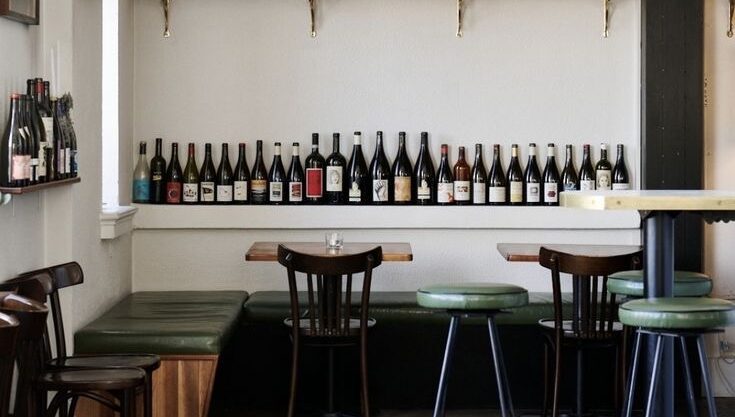Europe produces some of the best wine in the world, and with hundreds of wine farms spread across the continent, it produces many world-class varieties, too, from the coast of Portugal to the valleys of France and all the way to the Czech Republic.
If you are a wine lover and want to explore wine culture in Europe, here are a few of the continent’s best wine regions.
You’ll also like this:
Monthly Astrology Forecast June 2023 – How the Astrological Events Will Impact Your Zodiac Sign
Packing Essentials For A Fabulous Escape
From Infused Water to Tea: A Guide to Healthier Drink Choices

Porto Valley
Starting in Portugal, the Porto Valley is world-renowned in the wine community. With Portugal experiencing some of the best weather on the continent year-round, it is the perfect country to have a thriving wine hub.
Portugal has some of the best wine, and more importantly, Port, that you will ever taste. The namesake drink has the same gravitas as champagne, especially when you get it from the source.
Bordeaux
Of course, a region that has a wine named after it will be on this list. Bordeaux, in France, is probably one of the most recognisable regions on this list due to being the home of its namesake red wine and one of Europe’s most prominent wine regions.
Not only is the region known for its wine, but there are also dozens of small towns and villages around the area, all serving up the local wine and many French dishes.
Piedmont
While you may not have heard about the Piedmont region in Italy, you have probably heard about Barolo and Barbaresco, two areas that dominate the region. This area is characterised by wines with deep tannins and ones that are packed with flavour. Piedmont wines are some of the most unique on the planet and offer a taste that you can’t find anywhere else.
Champagne
A list like this wouldn’t be complete without mentioning one of, if not the most famous region in the world, Champagne. Accessible from Paris, Champagne is the quintessential European wine region.
Not only can you visit wine cellars that were built hundreds of years ago, but you can have champagne tastings straight from the barrels, enjoy a freshly made meal and a glass of bubbly, and get lost exploring the stunning vineyards and orchards.

Tuscany
Another world-famous wine region in Europe is Tuscany. Not only is it famed for having some of the best found in Italy, but it is also home to some of the best wine you will ever taste.
Most of the wine towns and villages are accessible by rail, barring some of the much smaller and more remote ones. There isn’t much you can say about Tuscany that hasn’t been said before; it has the wine, the food, the sights, the beauty, and a ton of Italian charm.
Mosel
One country you may not have expected to be on this list is Germany. Mosel is the wine capital of the country, and while Germany is more famous for its beer, it has produced some of the most sought-after bottles of wine in the world, too.
With its exceptional rail and public transport system, you can visit every part of Mosel, taking in the gorgeous German scenery, as well as eating some very fresh and very delicious German delicacies.
What to Remember
When travelling around these wine regions, there are a few things you should remember that will help you have the best and most enjoyable trip.
Getting Around
While most European cities and towns are very well connected via public transport, such as buses and trains, most of the wine regions are fairly remote. For example, there aren’t tons of buses or trains leaving Paris for Champagne every day; there are dedicated buses, but you need to book and plan in advance.
Because of this, if you don’t want to rent a car, rather opt for a tour. Most major cities will offer winery/wine region tours, and while you have to follow an itinerary, it does mean you get to see the most important aspects of the area.
Accessibility
Strangely, especially in wine regions that aren’t in major areas, most wine farms aren’t as accessible as you may think. Many don’t have public tasting rooms, tours, or restaurants, as they are set up purely to grow grapes and bottle wine.
Because of this, it is important to research where you want to go to ensure you can even see what you want to see and not be stopped by a closed gate at the entrance.
Language Barriers
Another thing to be aware of is language barriers. If you are with a tour guide, this won’t be a problem, but English isn’t very common in the more remote regions. While this is partly due to locals just not needing the language, some areas have very few visitors; therefore, there is no need to learn either.
Versatility
Finally, this isn’t necessarily something to remember but rather something to explore. Europe has a wide variety of wines, with Chenin Blancs or Bordeaux’s tasting vastly different from farm to farm and region to region.
Because of this, always remember to try everything; Europe isn’t a place where you can say, “I’ve had something like this before,” but you haven’t.
You’ll also like this:
Planning an Exclusive Yachting Getaway? 6 Things You Should Know About It
A Venetian Gem: Palazzina Grassi, Your Luxurious Boutique Hotel in Venice








Leave a Comment